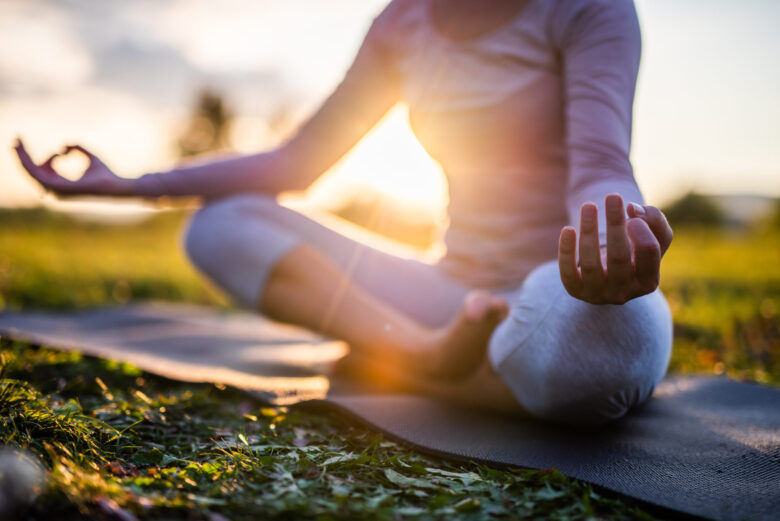Mindfulness is a time-tested method for relieving stress, sharpening focus, and building resilience. Furthermore, mindfulness can strengthen relationships while managing difficult emotions more effectively. Mindfulness meditation may seem intimidating or daunting, so here are three simple mindfulness exercises you can try out to ease into it.
1. Breathing Exercises
Breathing exercises are an effective way to calm the mind and relieve stress. You can try different breathing techniques or just inhale through your nose and exhale through your mouth.
Integrating mindfulness practices into your workout, whether cycling, dancing the tango, or walking, can transform exercise into an inward journey of contemplation and focus. To get maximum benefit out of mindfulness practices during physical exercise sessions, it’s essential that body, breath, and brain come together so you’re in tune with each moment instead of racing through each move. Try these breathing exercises to refocus during your workouts.
2. Meditation
Meditation is a form of mindfulness that can reduce stress by activating the body’s relaxation response. Meditation also has been proven to boost mood, decrease anxiety levels, and create emotional stability. Studies are increasingly finding that meditation practices may help lower physiological markers of stress, such as cortisol and heart rate, while increasing levels of the gamma aminobutyric acid neurotransmitter in the brain.
At a meditation session, focus on your breath or an object of interest, and when your thoughts wander off track, gently redirect them back. Be patient, as this may take some time to become part of your routine; even short sessions can help calm the mind and promote relaxation.
3. Body Scan Exercises
Body scan exercises are one of the most widely practiced meditation techniques and are an excellent way to feel connected with your body and reduce both pain and stress, according to research.
Start by finding a comfortable position—either lying down or sitting quietly with eyes closed—then close them again, paying attention to how each part feels. If your mind wanders, that’s okay: gently bring back focus onto another area of the body you are scanning. Body scan meditation won’t eliminate pain entirely, but it may alter how you perceive and approach it.
4. Focus on Your Feelings
Mindfulness practices help us develop strategies for handling difficult emotions instead of running from them, including accepting difficult feelings and cultivating curiosity. If you find yourself dwelling on past mistakes or worrying about the future, bring yourself back into the present by engaging one of your five senses: see, feel, hear, smell, or taste something.
Mindful living also involves maintaining an inner connection to yourself—whether that is through soul searching, Higher Self spirituality, or any other means. A common approach for doing this is guided imagery.
5. Listen to Music
Listening to music as part of a mindfulness practice can help you tune into your body and relax or serve as an excellent distraction from unwanted feelings or thoughts, such as anger or sadness. Pick music you enjoy that you know will set the right atmosphere – for instance, if rock music typically gives rise to negative feelings, try something more relaxing, like classical or nature sounds instead.
Once your mindful listening session has come to a close, take note of how it made you feel. Perhaps close your eyes and just listen to all the sounds around you—or do something similar, like walking outside to listen for sounds in nature or city streets!
6. Exercise
Stress-reducing habits like meditation, exercising regularly, sleeping soundly, eating a balanced diet, and nurturing relationships can all help alleviate feelings of anxiety and stress. But for those new to mindful living, getting started may seem intimidating—try starting small and consistent by adopting one small change at a time.
Mindful meditation can help to relax the mind, improve focus, and maintain emotional equilibrium. Mindfulness activates those parts of the brain responsible for executive functions like decision-making, reason, and concentration while soothing areas that respond to fear or stress. Regular physical activity also provides relief by increasing endorphin levels and encouraging better rest.
7. Sleep
Sleep is essential to physical and mental well-being. But finding enough rest can be challenging when stress causes anxiety or insomnia, yet mindfulness techniques have proven successful at improving restfulness and decreasing stress levels.
Living mindfully can be integrated into daily activities in many ways. You can practice it when eating, showering, or cleaning the house—this technique is known as open awareness and helps focus on both your senses and actions when performing daily tasks. Mindfulness while sleeping can also be practiced by avoiding distractions like your phone and creating an established bedtime schedule.
8. Focus on Your Relationships
Mindfulness can help anyone feel calmer. A daily practice, it focuses your mind on being present while freeing it of distracting thoughts.
Mindfulness also fosters compassion and empathy within relationships, which can help manage disagreements more amicably, as well as build closer, healthier connections. Couples experiencing difficulty may benefit from seeking professional assistance for mindfulness techniques from an experienced counselor.
9. Practice Kindness
Kindness may sound vaguely new-agey, but its impact has been proven to be tremendously effective for mental and physical wellness. Acting kind activates your body’s natural “feel-good” chemicals while decreasing stress hormones. Kindness isn’t just an attitude or personality trait—it’s an act. When feeling worn-out and overwhelmed, practicing self-kindness (even just sitting quietly in meditation) can restore energy levels and bring new hope and revitalize energy stores.
Consider being mindful of how your body feels while engaging in daily tasks such as washing dishes or folding laundry, as well as when engaging in interactions with others. Be intentional with both your actions and words to demonstrate that you care.




